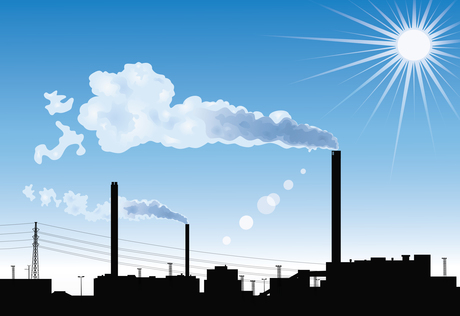Grim warnings on emissions

On the north-western point of Tasmania, Cape Grim Baseline Air Pollution Station is one of the key international monitoring facilities and is claimed to reflect the most accurate readings for the Southern Hemisphere.
Researchers from CSIRO and the Bureau of Meteorology, who run the site, recorded on 10 May that 400 parts per million (ppm) of carbon dioxide (CO2) in the atmosphere has been passed. This reading is significant, as scientists warn that it may mean there is no return.
Although CO2 is said to be the primary greenhouse gas that can lead to climate change, Australia’s turbulent political environment has resulted in changes and backflips when it comes to emissions policies. According to Frank Silberberg, director at Group Instrumentation, “Compared to Europe and even America, Australia is a third-world country when it comes to taking environmental emissions and monitoring seriously.”
One of the founders of Group Instrumentation, Frank is a specialist in continuous emissions monitoring systems (CEMS) with 27 years’ experience in the business. During this time, he has seen some significant trends and challenges.
Frank blames the fragmentation of state and federal government legislation as the main source of our inaction on monitoring emissions. He says greenhouse gas monitoring seems to have fallen by the wayside with the collapse of the Labor government’s carbon trading policy.
“We used to include stack flow monitoring within our CEMS, for the greenhouse gas legislation (NGER), as industry had to report a mass emission in a tonnes-per-year type of measurement. These reports still need to be done under the legislation, but with no carbon trading, industry no longer specify these flow monitors,” he said.
In comparison, he said, Europe has to abide by a set of strong environmental directives so there is a level playing ground for industry. “However, in Australia, each state has different environmental rules to follow, so this makes it difficult for industries that operate across different states.
“In this country, we tend to be just concerned about visual and odorous emissions. So if we can’t see it or smell it, it can’t be too bad!” he said.
“Most companies have licences to operate and emit at certain levels, but it is pretty much self-regulating.”
Luckily for us, Frank says the majority of the more mature manufacturers that are left in Australia do the right thing. “Many industries have a desire to be good corporate citizens or they have ties to Europe or America and just follow that legislation, and use the same equipment that their parent company has in Switzerland, Belgium or somewhere else.”
When it comes to dust emissions, the state-based EPAs do know the typical emissions produced by each industry and want them to reduce, reduce, reduce under their environmental improvement plans, but even this is mainly self-regulating according to Frank.
Technology and trends in emissions monitoring
“As dust emissions come down, the technology to measure dust emissions needs to be better and more sensitive. To give you an idea, coal-fired power stations used to have licence limits of around 400 mg/m3, whereas today, if you’re building a new coal-fired plant (which you probably wouldn’t), it would be 100 at the most or even 50 mg/m3. Dust measurement technology has become more sensitive and includes more self-checks to prove that the equipment works.”
While mobile phone technology changes every 15 minutes, Frank says analyser technology changes every 15 years. “It is a very slow, conservative industry, but the current trend is away from extractive gas analysers to in-stack gas analysers. Using this technology, you measure directly in the stack, so you’re getting a true measurement of actually what’s happening in the stack. It’s more accurate, more repeatable and requires less maintenance.”
Food manufacturing and processing is one industry that is doing very well in Australia. According to Frank, there have been massive new export opportunities in milk powder and baby formula processing plants springing up for China. “Emissions from these plants, being dust, are not so much about making a mess of the environment but about product loss. Monitoring equipment is an easier sell for these jobs as there is a payback.
“Also, lately there has been some focus on the brick industry that heats clay in kilns. This process gives off hydrogen chloride (HCl) and hydrogen fluoride (HF). In recent years, we’ve supplied a number of analysers for those gases. There are only small amounts, but HF is quite dangerous in small amounts and HCl gas becomes hydrochloric acid if there is condensation forming.”
Although Australia has its faults with legislation, Frank says it is a great country to live in. “We can breathe!” he said.
“Manufacturing industries are gradually reducing and I do have some concerns about what my three grandchildren may do for a job in the future.
“It’s gloomy if you don’t have a job. So we can’t frighten away industry altogether, but at the same time, they need a clean footprint so our great-grandchildren can keep breathing clean fresh air,” concluded Frank.
Dirty dancing across a new energy landscape
The real-time balancing of electricity generation (supply) and demand is like a dynamic dance and...
Digitising Australia's buildings is key to tackling net zero
Businesses around the world are continuing to focus on net zero, and building construction and...
Ausgrid steps closer to net zero using 'blue gas' switchgear
Ausgrid is using Siemens' blue gas insulated (GIS) medium-voltage switchgear, which uses...











